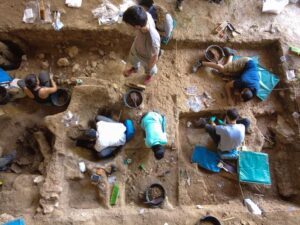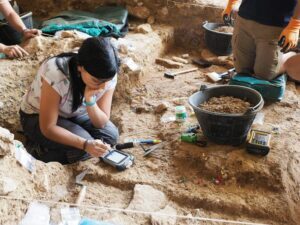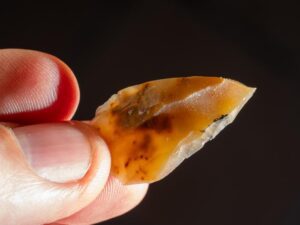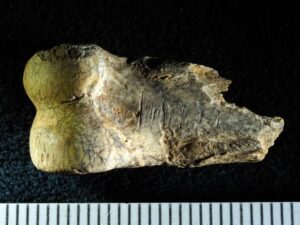
AMERICAN ASSOCIATION FOR THE ADVANCEMENT OF SCIENCE (AAAS)—A new analysis* of artifacts and fossils from a prehistoric rock shelter in central Iberia challenges the idea that the region housed no humans from 42,000 to 19,000 years ago. Instead, the shelter holds traces of ongoing occupation in the Upper Paleolithic, including tools associated with Early European modern humans called Aurignacians. Hominins are known to have occupied the Iberian Peninsula for most of the Paleolithic, save for a period between Neanderthals’ extinction roughly 42,000 years ago and the Last Glacial Maximum’s thaw 19,000 years ago. It was thought that mountainous central Iberia’s cold and harsh climate during this time rendered it an uninhabitable “nobody’s land” and established a geographic boundary between early human populations. Recently though, research has indicated that some humans actually lived in this area as early as 26,000 years ago. Yet, a period of 16,000 years remains where the region’s history of habitation is unknown. Now, Nohemi Sala and colleagues fill in this temporal gap with the discovery of an Upper Paleolithic rock shelter called the Abrigo de la Malia found in 2017 in Guadalajara, Spain. They employed techniques, including radiocarbon dating, to examine sediment, fossilized teeth and bone, and charcoal fragments at Malia. This work indicated the shelter had continuous human activity 36,200 – 31,760 years ago and frequent re-settlement up to 26,260 years ago. Other artifacts from the site, such as shaped flint and bone blades, resemble those found at Aurignacian sites. This Upper Paleolithic culture prevailed in Europe from around 43,000 to 28,000 years ago. The shelter occupants’ ties to the Aurignacians imply that harsh conditions in central Iberia at the time did not prevent cultural exchange.
_____________________________

Above and below: The Abrigo de la Malia site during its excavation. Javier Trueba-MSF
________________________________

________________________________

Flint Blade from the Upper Paleolithic units of La Malia rock shelter site. Javier Trueba-MSF
________________________________

Phalanx of a herbivore with unambiguous signs of human intervention (cut marks) from the Abrigo de la Malia early Upper Paleolithic unit. Javier Trueba-MSF
________________________________
Article Source: AAAS news release
*Nobody’s land? The oldest evidence of early Upper Paleolithic settlements in inland Iberia, Science Advances, 26-Jun-2024. 10.1126/sciadv.ado3807
________________________________
Advertisement




